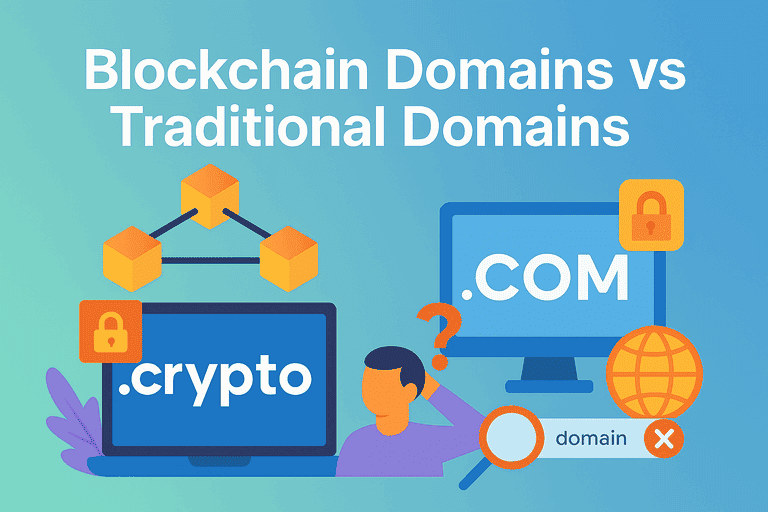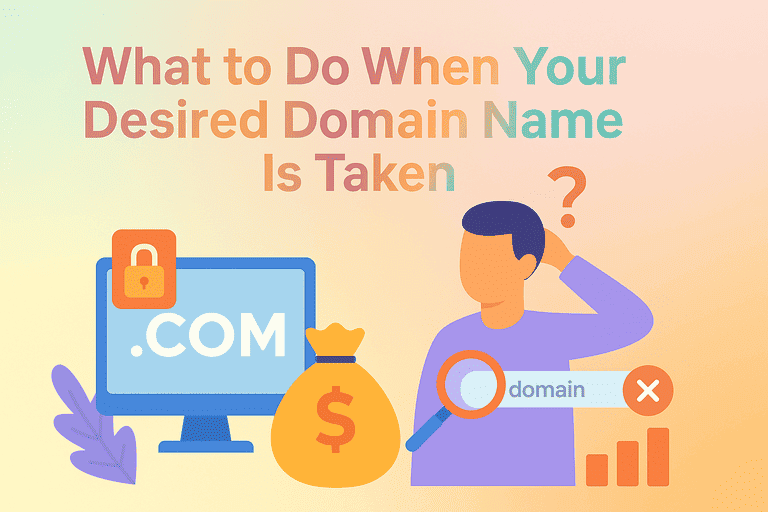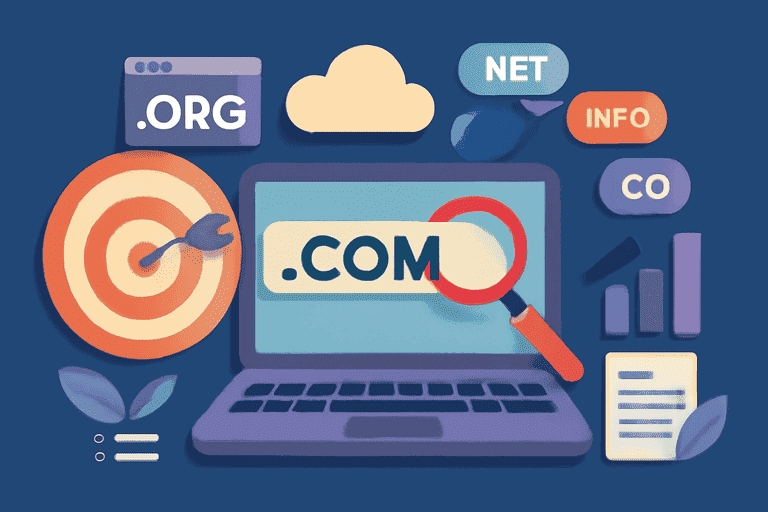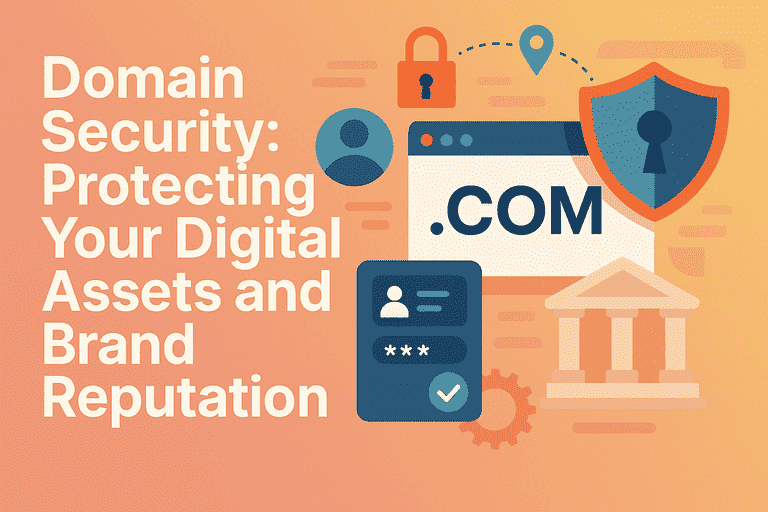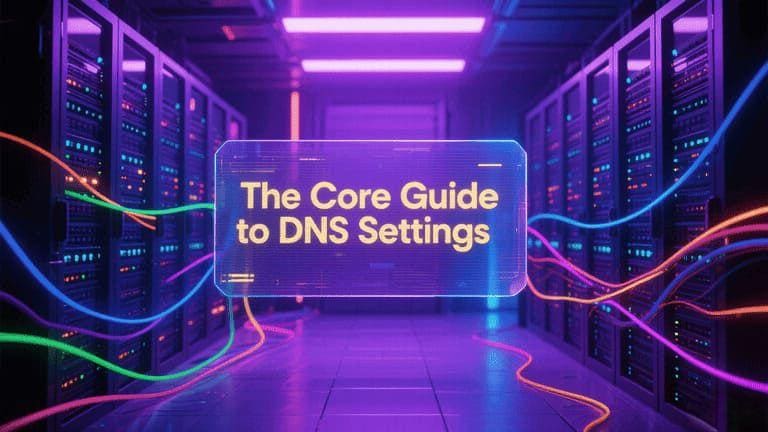Your domain name is more than just a web address; it’s the cornerstone of your online identity. Whether for a personal blog, a startup, or a large enterprise, effective management of your domain assets is critical. This guide breaks down the essential aspects of the domain lifecycle: renewal, transfers, ownership changes, and strategies for efficiently managing your entire domain portfolio.
1. The Importance of Domain Renewal: What Happens if It Expires?
Registering a domain name is not a one-time purchase but a subscription. Overlooking your domain renewal can have devastating consequences for your online presence.
The Severe Consequences of an Expired Domain:
- Website and Email Downtime: The moment your domain expires, your website becomes inaccessible, and all associated email services will cease to function. This directly leads to lost traffic, business interruption, and potential loss of revenue.
- Damage to Brand Credibility: Visitors who encounter a non-loading page or a parked domain page will lose trust in your brand, damaging your professional image.
- Drop in Search Engine Rankings: Search engines will quickly de-index a website that is unavailable, potentially erasing years of search engine optimization (SEO) efforts.
- Risk of Domain Hijacking: The most critical risk is that once a domain passes through its expiration phases and is released, anyone—including your competitors—can register it. You could lose this invaluable digital asset forever or be forced to pay a premium to buy it back.
Appendix: The Domain Name Lifecycle
To better understand the journey of a domain from registration to deletion, here is a typical domain name lifecycle diagram:

- Active Period: During this time, you have full control over the domain.
- Grace Period: After expiration, most registrars offer a grace period where you can renew the domain at the standard price.
- Redemption Period: If you miss the grace period, the domain enters redemption. To get it back now, you must pay a significantly higher redemption fee.
- Pending Deletion: Following redemption, the domain is held for a short period during which it cannot be recovered or managed.
- Available for Public Registration: After the pending deletion phase, the domain is released to the public, and anyone can register it on a first-come, first-served basis.
Key Recommendation: The best way to prevent accidental expiration is to enable the auto-renewal feature and ensure your payment information and contact email address are always up to date.
2. Domain Transfer: Why and How to Do It
A domain transfer is the process of moving your domain name from one registrar to another. This action changes your service provider but does not change who owns the domain.
Why Transfer a Domain?
- Better Pricing: Registration and renewal fees can vary significantly between registrars. Transferring can lead to long-term cost savings.
- Improved Management & Features: You may be unsatisfied with your current registrar’s user interface, customer support, or value-added services (e.g., DNS management, email hosting).
- Consolidate Your Portfolio: If you own domains across multiple registrars, consolidating them under one provider simplifies management immensely.
- Enhanced Security: You might seek a registrar that offers more robust security features, such as advanced two-factor authentication or better access controls.
- Bundle with Hosting: It is often convenient to manage both your domain and web hosting under a single provider.
How to Transfer a Domain:
The domain transfer process is standardized and generally involves the following steps:
- Preparation at Your Current Registrar:
- Unlock the Domain: Log in to your current registrar and disable the “Registrar Lock” or “Transfer Lock.”
- Obtain the Authorization Code (Auth Code/EPP Code): This code acts as a password for the transfer. You can usually find it in your control panel or request it from support.
- Verify Admin Email: Ensure the administrative contact email in your WHOIS records is active and accessible, as the transfer approval email will be sent to this address.
- Initiation at Your New Registrar:
- On your chosen new registrar’s website, start a “Domain Transfer” and enter the domain you wish to move.
- Provide the Auth Code when prompted.
- Complete the payment. A domain transfer typically includes a one-year extension of your registration.
- Approve the Transfer:
- The new registrar will send a confirmation email to the administrative contact email address. You must click the link in this email to approve the transfer.
- Your old registrar may also send an email notifying you of the outgoing transfer request.
- Wait for Completion:
- The entire process usually takes 5 to 7 business days. Your website and email services will not be interrupted during this time.
3. Domain Ownership Change: The Process of Transferring Title
An ownership change (also known as a “Change of Registrant” or “Trade”) is different from a registrar transfer. It involves changing the legal owner of the domain from one person or entity to another.
Common Scenarios for an Ownership Change:
- Buying or Selling a Domain: The domain is an asset being exchanged.
- Company Restructuring: The legal entity that owns the domain has changed.
- Asset Reassignment: Moving a domain from a personal name to a company name, or vice versa.
The Ownership Change Process:
The exact steps can vary by registrar but generally involve the following, whether the change happens within one registrar or between two.
- Update Contact Information (If Necessary): Ensure the current registrant contact information is accurate.
- Initiate the Ownership Change Request:
- Within the Same Registrar: The current owner can often initiate a “Change of Ownership” or “Push” to another account from their dashboard. The new owner must then accept the domain into their account.
- Between Different Registrars: This is often combined with a registrar transfer. When initiating the transfer, you update the registrant information to that of the new owner.
- Confirmation from Both Parties: This is a crucial security step to prevent unauthorized changes.
- Both the current owner and the new owner will typically receive confirmation emails.
- Both parties must click the links in their respective emails to approve the change.
- 60-Day Transfer Lock: Per ICANN (Internet Corporation for Assigned Names and Numbers) policy, after a change to the registrant’s primary contact information (name, organization, or email), the domain will be locked from being transferred to another registrar for 60 days. Some registrars offer an option to opt out of this lock before confirming the change.
4. Managing Multiple Domains: How to Organize Your Assets Efficiently
As your domain portfolio grows, an effective management strategy becomes essential to save time, reduce risk, and maximize the value of your assets.
Best Practices for Multi-Domain Management:
- Centralize Your Domains: Consolidate all your domains with one trusted registrar. This simplifies billing, renewal, and makes it easy to perform bulk updates to DNS or contact information.
- Maintain a Domain Inventory: Use a spreadsheet or a professional domain management tool to track key details for each domain: registrar, expiration date, purpose (e.g., primary site, brand protection, project), and renewal cost.
- Enable Auto-Renewal: For all critical domains, turn on auto-renewal and ensure a valid backup payment method is on file in case the primary one fails.
- Implement Strong Security:
- Use Two-Factor Authentication (2FA) for your registrar account.
- Apply Registrar Lock and, for high-value domains, Registry Lock to prevent unauthorized transfers or modifications.
- Standardize WHOIS Information: Unless there’s a specific reason not to, use consistent and accurate owner information across your portfolio and review it periodically for updates.
- Execute a Domain Strategy:
- Brand Protection: Register variations of your brand name, including different TLDs (.com, .net, .org) and common misspellings, to prevent cybersquatting and brand dilution.
- Categorize and Tag: Use labels or folders within your registrar’s platform to organize domains by purpose, such as “Core Business,” “Marketing Campaigns,” or “Defensive Registrations.”
- Conduct Regular Audits: At least once a year, perform a full audit of your portfolio. Evaluate the purpose and value of each domain to decide whether to keep, sell, or let it expire.
By following these guidelines, you can navigate the complexities of domain management with confidence, ensuring your digital assets remain secure, organized, and continue to deliver value for your online strategy.

